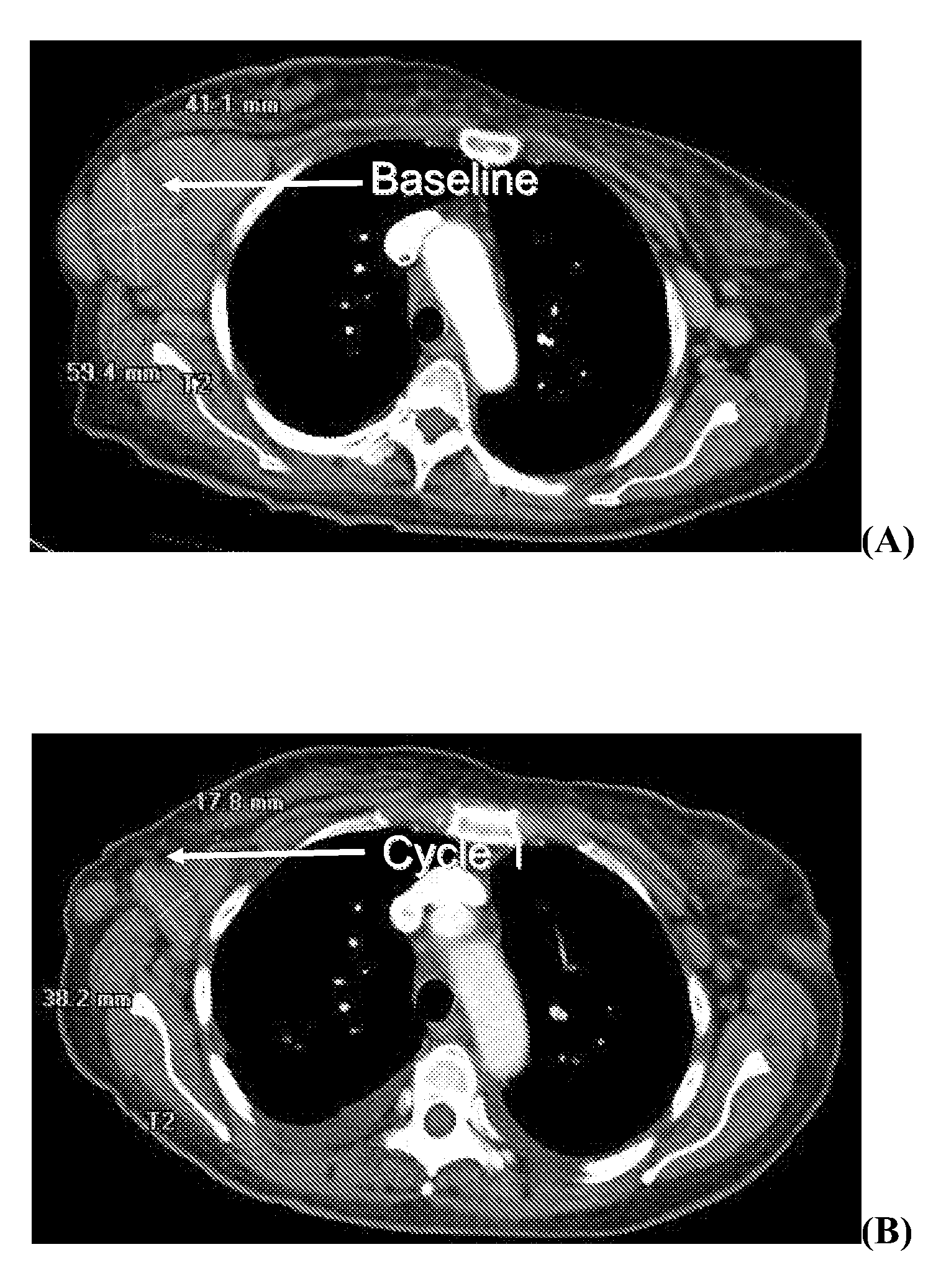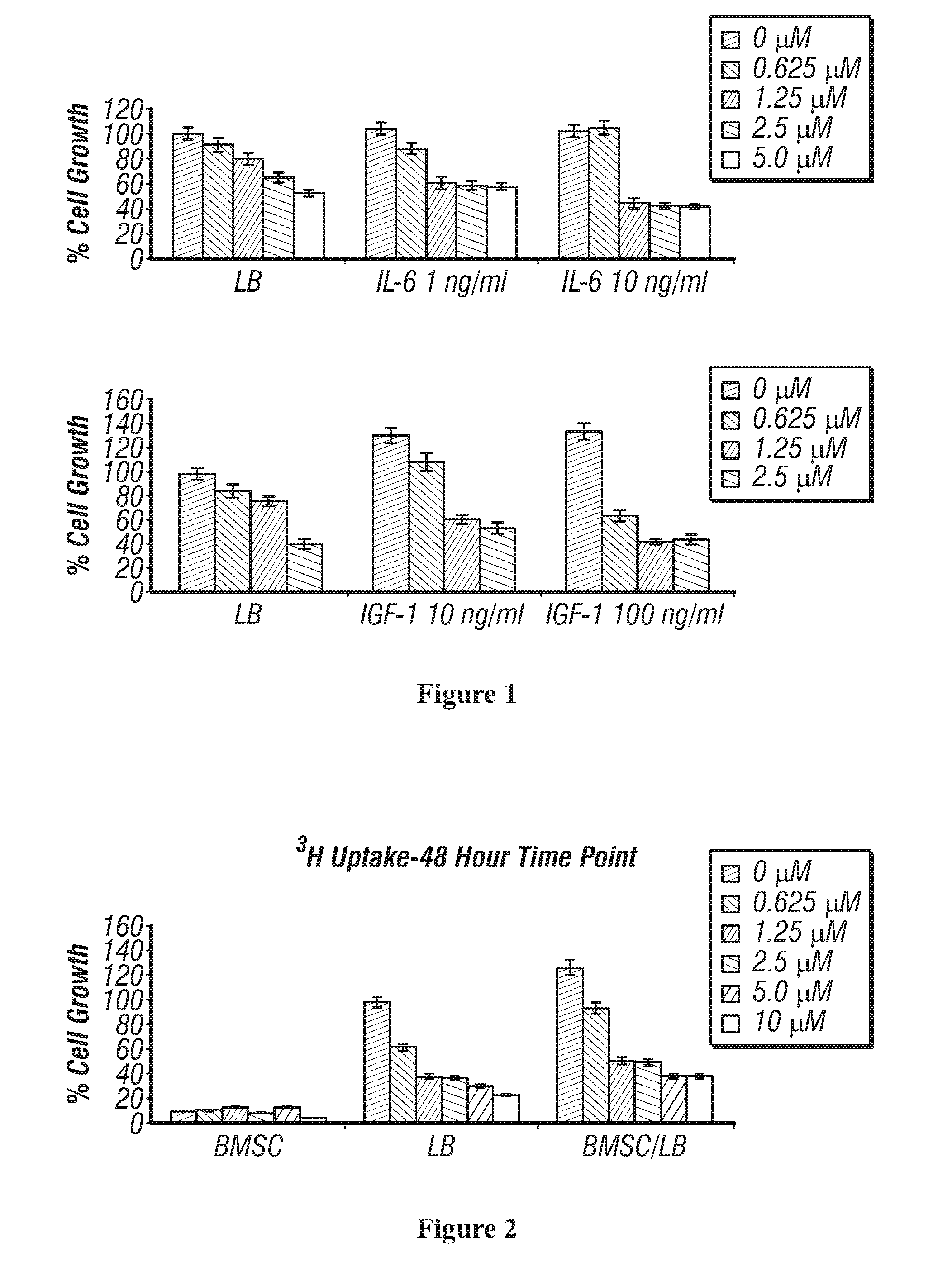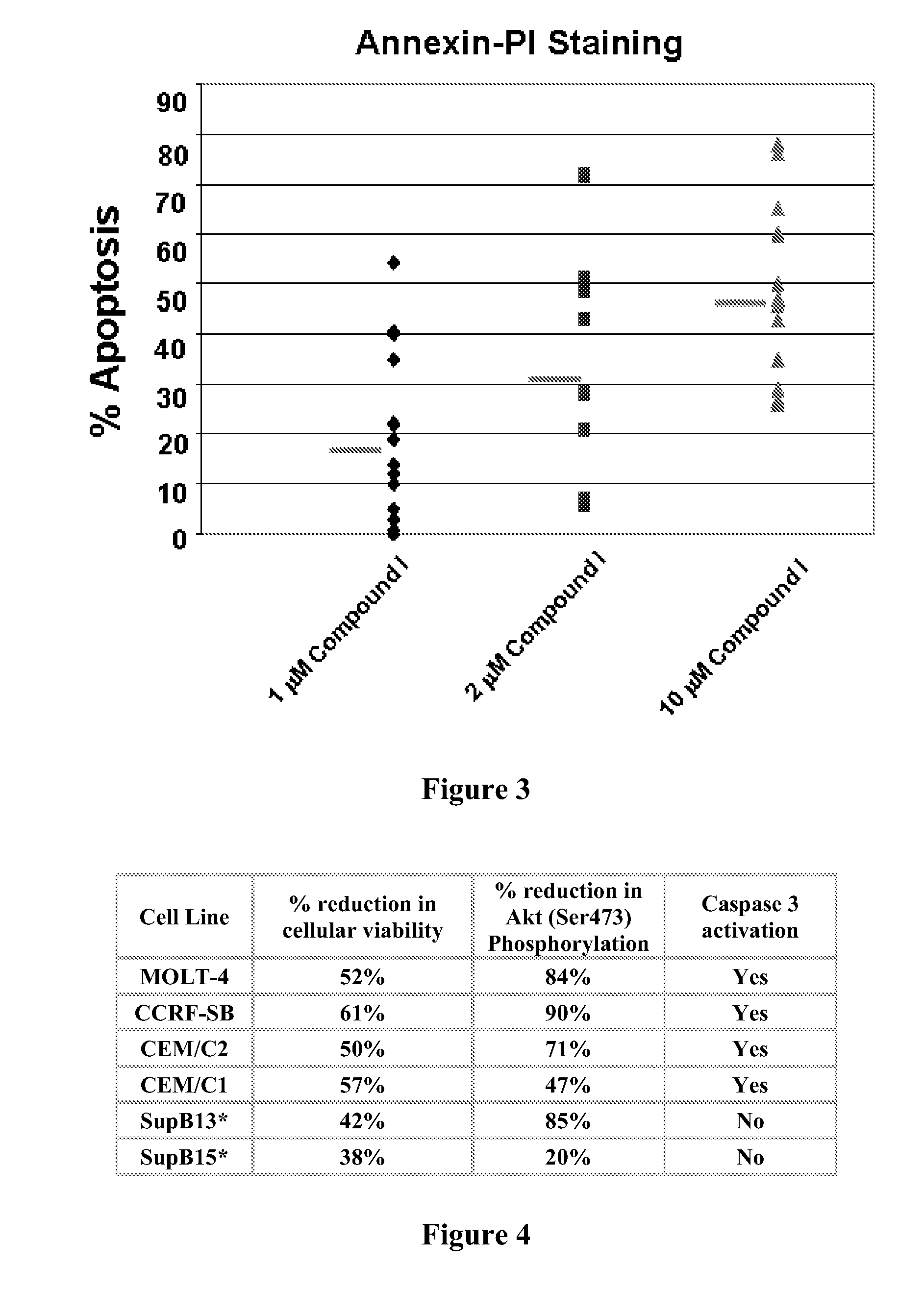Combination therapies for hematologic malignancies
a combination therapy and hematologic malignancy technology, applied in the field of therapeutics and medicinal chemistry, can solve the problems of limited serum effect and less effective in reducing malignant lymphadenopathy, and achieve the effects of improving safety profile, favorable pharmacokinetic profile and good target coverag
- Summary
- Abstract
- Description
- Claims
- Application Information
AI Technical Summary
Benefits of technology
Problems solved by technology
Method used
Image
Examples
example 1
Inhibition of Cell Growth in MM Cells
[0365]This example demonstrates the compound of formula I inhibits the cellular growth stimulatory effects of cytokines (IGF-1 and IL-6) in multiple myeloma (MM) cells. LB cells (Myelomonocytic myeloma cell line) were cultured for 48 h with control media; with the compound of formula I, in the presence or absence of either IL-6 or IGF-1. The inhibitory effect of the compound of formula I on MM cell growth was assessed by measuring 3-(4,5-dimethylthiazol-2-yl)-2,5-diphenyl tetrasodium bromide (MTT; Chemicon International) dye absorbance. Cells were pulsed with 10 μL of 5 mg / mL MTT to each well for the last 4 hours of 48-hour cultures, followed by 100 μL isopropanol containing 0.04 N HCl. Absorbance was measured at 570 / 630 nm using a spectrophotometer (Molecular Devices). A summary of the results is shown in FIG. 1. Exposure of 0.625 μM-2.5 μM of Compound I inhibits MM cell growth even in the presence of cell growth stimulatory cytokines.
example 2
Effect of BMSC on Cytotoxicity
[0366]This example demonstrates Bone Marrow Stromal Cells (BMSCs) do not protect against compound I-induced LB cell cytotoxicity. LB cells were cultured with control media, and with the compound of formula I for 48 hours, in the presence or absence of BMSCs. Cell proliferation was assessed using [3H]-thymidine uptake assay. All data represent mean (±SD) of triplicate experiment. A summary of the results is shown in FIG. 2. LB cell growth is reduced after exposure to 0.625 μM-10 μM of compound I even in the presence of BMSC.
example 3
Effect of Compound on Apoptosis of CLL Cells
[0367]This example demonstrates the compound of formula I induces apoptosis in patient chronic lymphocytic leukemia (CLL) cells. Peripheral blood was obtained from patients with B-CLL through the CLL Research Consortium from Ohio State University. Primary CD19-positive cells were isolated using Rosette-Sep (StemCell Technologies). Cells were maintained in RPMI 1640 (Invitrogen) supplemented with 10% heat-inactivated fetal bovine serum, 2 mmol / L L-glutamine, and penicillin (100 units / mL) / streptomycin (100 μg / mL; Invitrogen) at 37° C., 5% CO2, and high humidity. After incubation with the compound of formula I or medium for 96 hours, 5×105 cells were washed with PBS and then resuspended in binding buffer (10 mmol / L HEPES / NaOH, pH 7.4, 150 mmol / L NaCl 5 mmol / L KCl, 1 mmol / L MgCl2, 1.8 mmol / L CaCl2) containing 2 μL of Annexin V-FITC stock (BioWhittaker, Inc) and 10 μL of 20 μg / mL PI (Sigma). After incubation for 10 minutes at room temperature i...
PUM
| Property | Measurement | Unit |
|---|---|---|
| enantiomeric excess | aaaaa | aaaaa |
| enantiomeric excess | aaaaa | aaaaa |
| S-enantiomeric excess | aaaaa | aaaaa |
Abstract
Description
Claims
Application Information
 Login to View More
Login to View More - R&D
- Intellectual Property
- Life Sciences
- Materials
- Tech Scout
- Unparalleled Data Quality
- Higher Quality Content
- 60% Fewer Hallucinations
Browse by: Latest US Patents, China's latest patents, Technical Efficacy Thesaurus, Application Domain, Technology Topic, Popular Technical Reports.
© 2025 PatSnap. All rights reserved.Legal|Privacy policy|Modern Slavery Act Transparency Statement|Sitemap|About US| Contact US: help@patsnap.com



